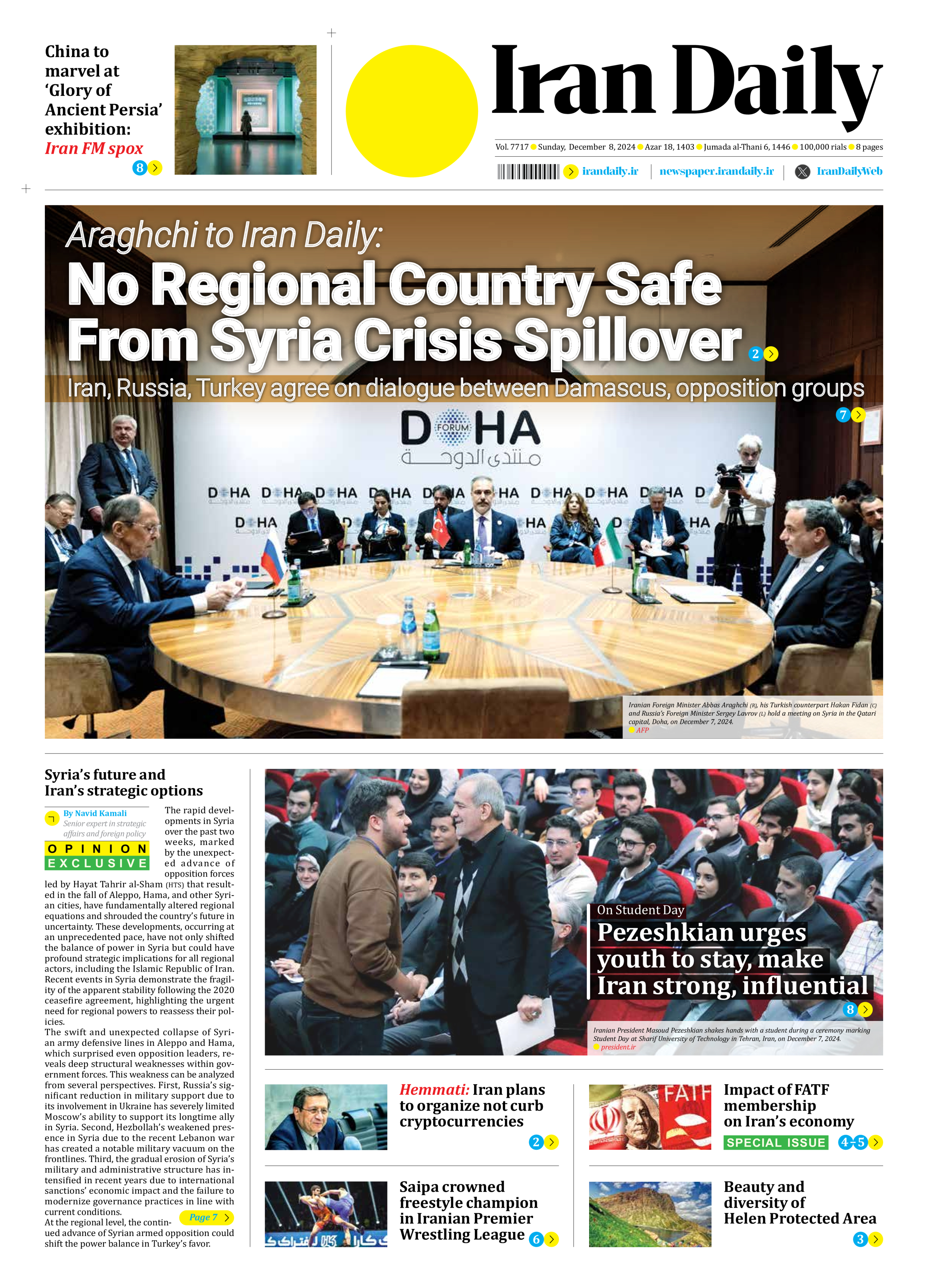
Syria’s future and Iran’s strategic options
By Navid Kamali
Senior expert in strategic affairs and foreign policy
The rapid developments in Syria over the past two weeks, marked by the unexpected advance of opposition forces led by Hayat Tahrir al-Sham (HTS) that resulted in the fall of Aleppo, Hama, and other Syrian cities, have fundamentally altered regional equations and shrouded the country’s future in uncertainty. These developments, occurring at an unprecedented pace, have not only shifted the balance of power in Syria but could have profound strategic implications for all regional actors, including the Islamic Republic of Iran. Recent events in Syria demonstrate the fragility of the apparent stability following the 2020 ceasefire agreement, highlighting the urgent need for regional powers to reassess their policies.
The swift and unexpected collapse of Syrian army defensive lines in Aleppo and Hama, which surprised even opposition leaders, reveals deep structural weaknesses within government forces. This weakness can be analyzed from several perspectives. First, Russia’s significant reduction in military support due to its involvement in Ukraine has severely limited Moscow’s ability to support its longtime ally in Syria. Second, Hezbollah’s weakened presence in Syria due to the recent Lebanon war has created a notable military vacuum on the frontlines. Third, the gradual erosion of Syria’s military and administrative structure has intensified in recent years due to international sanctions’ economic impact and the failure to modernize governance practices in line with current conditions.
At the regional level, the continued advance of Syrian armed opposition could shift the power balance in Turkey’s favor.
Page 7







